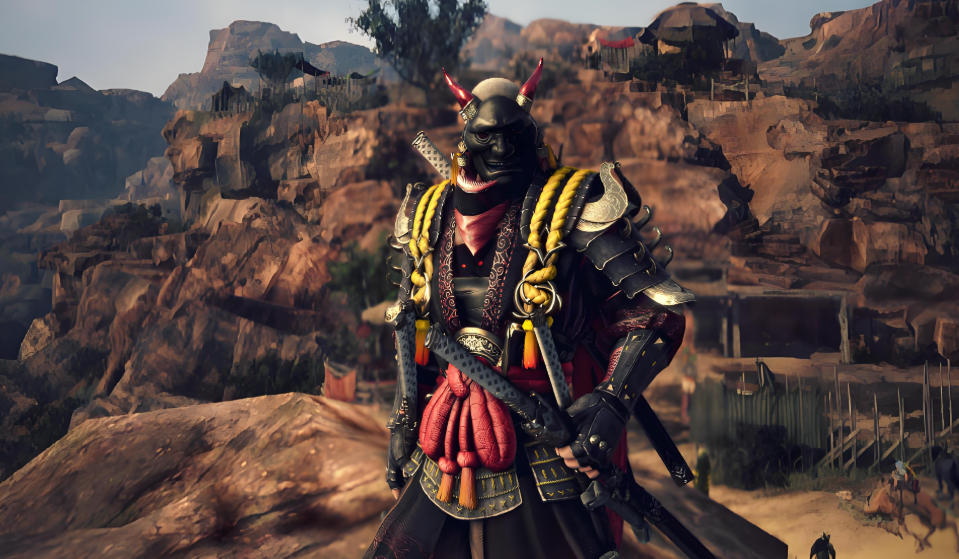วัฒนธรรมซามูไรและคาตานะของญี่ปุ่น: จากประวัติศาสตร์สู่การสะสมสมัยใหม่

วัฒนธรรมเบื้องหลังซามูไรและคาทานะในญี่ปุ่นคืออะไร และเหตุใดผู้คนยังคงสะสมสิ่งเหล่านี้มาจนถึงทุกวันนี้?
วัฒนธรรม ซามูไรและคาตานะในญี่ปุ่น มีรากฐานอันลึกซึ้งในประวัติศาสตร์ ปรัชญา และขนบธรรมเนียมประเพณี คาตานะเป็นมากกว่าอาวุธมาหลายศตวรรษ นับเป็นสัญลักษณ์แห่งเกียรติยศ วินัย และหลักปฏิบัติทางจิตวิญญาณของชนชั้นซามูไร ดาบแต่ละเล่มถูกตีขึ้นอย่างพิถีพิถันด้วยฝีมืออันประณีตบรรจง สื่อถึงแก่นแท้ของบูชิโด อันหมายถึงความภักดี ความกล้าหาญ และความเคารพ
ปัจจุบัน ผู้คนยังคงสะสมดาบคาตานะ ไม่เพียงแต่เพราะ ความสำคัญทางประวัติศาสตร์และวัฒนธรรม เท่านั้น แต่ยังรวมถึง ศิลปะและสัญลักษณ์ อีกด้วย ดาบญี่ปุ่นแท้ได้รวบรวมทักษะและมรดกอันยาวนานหลายศตวรรษ ทำให้ดาบคาตานะเป็นที่ต้องการอย่างมากในหมู่นักศิลปะการต่อสู้ นักประวัติศาสตร์ และนักสะสมทั่วโลก ไม่ว่าจะถูกเก็บรักษาไว้เป็นของเก่า จัดแสดงเป็นโบราณวัตถุทางวัฒนธรรม หรือประดิษฐ์ขึ้นเป็นแบบจำลองสมัยใหม่ ดาบคาตานะก็ยังคงเป็นสะพานเชื่อมระหว่างอดีตนักรบของญี่ปุ่นกับความชื่นชมในงานฝีมือแบบดั้งเดิมที่ยังคงดำเนินอยู่
ในประวัติศาสตร์ญี่ปุ่น ซามูไร (https://en.wikipedia.org) ไม่เพียงแต่เป็นชนชั้นทหารเท่านั้น แต่ยังเป็นสัญลักษณ์ของจิตวิญญาณและวัฒนธรรมอีกด้วย ดาบคาตานะ คือสัญลักษณ์สำคัญที่บ่งบอกถึงอัตลักษณ์ของซามูไร ซึ่งมักถูกยกย่องว่าเป็น “จิตวิญญาณของซามูไร” ไม่ว่าจะเป็นการศึกษา ประวัติศาสตร์ซามูไรในญี่ปุ่น การชื่นชม ดาบคาตานะญี่ปุ่นแท้ๆ หรือการสะสม ดาบญี่ปุ่นแท้ๆ ล้วน เป็นสิ่งที่ไม่อาจทำได้หากปราศจากความเข้าใจอย่างลึกซึ้งเกี่ยวกับซามูไรและวัฒนธรรมดาบญี่ปุ่น

ซามูไรมีชื่อเสียงในด้านใด?
ซามูไรมีชื่อเสียงในด้านสำคัญหลายประการ:
-
ทักษะการต่อสู้ที่ยอดเยี่ยม : ซามูไรได้รับการฝึกฝนอย่างเข้มงวดและเชี่ยวชาญศิลปะการต่อสู้หลายประเภท รวมถึงการใช้ดาบ (เช่น คาตานะ ) การยิงธนู และการขี่ม้า
-
ความภักดีและเกียรติยศ : พวกเขาปฏิบัติตามหลัก บูชิโด โดยเน้นความภักดีต่อเจ้านาย ครอบครัว และประเทศชาติ รวมไปถึงความสำนึกในเกียรติยศส่วนบุคคลอันแรงกล้า
-
วินัยและการควบคุมตนเอง : ซามูไรใช้ชีวิตอย่างมีวินัยสูง โดยเน้นที่การพัฒนาตนเอง การฝึกฝนจิตใจ และมารยาทที่เหมาะสม
-
ความกล้าหาญและความไม่หวั่นไหว : ในสนามรบ พวกเขาเป็นที่รู้จักในเรื่องความกล้าหาญ ความเด็ดขาด และความสงบ ไม่เคยหวั่นไหวเมื่อเผชิญกับชีวิตและความตาย
-
ความประณีตทางวัฒนธรรม : นอกเหนือจากทักษะการต่อสู้แล้ว ซามูไรจำนวนมากยังมีทักษะในการเขียนพู่กัน พิธีชงชา บทกวี และศิลปะวัฒนธรรมอื่นๆ ซึ่งถือเป็นตัวอย่างของอุดมคติของการเป็น "ทั้งผู้มีวัฒนธรรมและการต่อสู้"
ซามูไรไม่เพียงแต่เป็นนักรบเท่านั้น แต่ยังเป็นสัญลักษณ์ของวัฒนธรรมที่แสดงถึงความภักดี ความกล้าหาญ วินัย และความละเอียดอ่อนทางจิตวิญญาณ
1. ซามูไรและจิตวิญญาณแห่งบูชิโด
ประวัติศาสตร์ซามูไร ของญี่ปุ่นย้อนกลับไปถึงยุคเฮอัน และวิวัฒนาการผ่านยุคคามาคุระ เซ็นโกกุ และเอโดะ จนกระทั่งในที่สุดก็ก่อกำเนิดระบบชนชั้นทางสังคมที่เป็นเอกลักษณ์ ซามูไรไม่เพียงแต่เป็นนักรบในสนามรบเท่านั้น แต่ยังเป็นผู้รักษาระเบียบสังคมอีกด้วย ตลอดหลายศตวรรษที่ผ่านมา พวกเขาได้พัฒนาความเชื่อและอัตลักษณ์ทางวัฒนธรรมของตนเอง ซึ่งรู้จักกันในชื่อ วิถีซามูไร (武士之道)
วิถีของซามูไร ไม่ได้เน้นเพียงความแข็งแกร่งในการต่อสู้เท่านั้น แต่ยังรวมถึงความภักดี เกียรติยศ และวินัย ซึ่งหลอมรวมเป็น ประมวลกฎหมายของซามูไร (武士道) ไม่ว่าจะเรียกว่า ประมวลกฎหมายซามูไร ประมวลกฎหมายซามูไร หรือแม้แต่ ประมวลกฎหมายซามูไร ล้วนแต่ชี้ให้เห็นถึงแก่นแท้เดียวกัน นั่นคือ ความภักดีต่อเจ้านาย การต่อสู้เพื่อความยุติธรรม และการธำรงไว้ซึ่งความบริสุทธิ์ทางศีลธรรมและจิตวิญญาณ นักวิชาการที่ศึกษา ประวัติศาสตร์ของซามูไรในญี่ปุ่น มักเปรียบเทียบซามูไรกับอัศวินในยุโรป โดยตั้งข้อสังเกตว่าแม้รูปแบบของซามูไรจะแตกต่างกัน แต่ทั้งสองประเทศก็ให้คุณค่ากับความภักดีและความเชื่อมั่น
ในวัฒนธรรมดั้งเดิม ชีวิตของซามูไรแผ่ขยายออกไปนอกสนามรบ พิธีกรรมต่างๆ ของซามูไร สะท้อนถึงการแสวงหาวินัยและจิตวิญญาณ บ้านซามูไร ของครอบครัวนักรบก็กลายเป็นองค์ประกอบสำคัญของวัฒนธรรมทางประวัติศาสตร์ ไม่เพียงแต่เป็นที่อยู่อาศัยเท่านั้น แต่ยังเป็นสัญลักษณ์ของสถานะและชนชั้นอีกด้วย
แม้กระทั่งทุกวันนี้ ญี่ปุ่นยังคงฟื้นฟูมรดกนักรบผ่าน การแสดงซามูไร หรือ การแสดงซามูไรญี่ปุ่น ซึ่งผู้ชมสามารถสัมผัสถึงความสำคัญของ ประวัติศาสตร์ซามูไรญี่ปุ่น ได้ด้วยตนเอง การแสดงเหล่านี้ประกอบด้วย การแต่งกายแบบซามูไร ดั้งเดิม การฝึกดาบซามูไร และการแสดงอันน่าตื่นเต้นของ ซามูไรและนินจา เพื่อรักษา ประวัติศาสตร์ซามูไรญี่ปุ่น โบราณให้คงอยู่และมีชีวิตชีวา
ด้วยการแลกเปลี่ยนทางวัฒนธรรม ผู้คนมากมายทั่วโลกต่างมีส่วนร่วมกับมรดกนี้ด้วยการเรียนรู้ การฝึกฝนดาบคาตานะ และสัมผัสประสบการณ์ การฝึกฝนดาบซามูไร ดื่มด่ำกับ ศิลปะการต่อสู้ของซามูไร สำหรับนักสะสมและผู้ที่ชื่นชอบ การได้ครอบครอง ดาบญี่ปุ่นแท้ คา ตานะญี่ปุ่นแท้ หรือ คาตานะแท้จากญี่ปุ่น ไม่เพียงแต่แสดงถึงความเคารพในประวัติศาสตร์เท่านั้น แต่ยังเป็นการอนุรักษ์มรดกทางศิลปะ ของดาบ อีกด้วย ปัจจุบัน ผู้ผลิตดาบญี่ปุ่น และ ผู้ผลิตดาบญี่ปุ่น ยังคงสืบสานประเพณี การตีดาบ โบราณ โดยใช้ เหล็กกล้าคุณภาพดีที่สุด ในการผลิต ดาบตีขึ้นรูป ทำให้ ดาบสั่งทำพิเศษ และ ดาบส่วนบุคคลกลาย เป็นความจริง
การผสมผสานจิตวิญญาณดั้งเดิมเข้ากับงานฝีมือสมัยใหม่นี้ทำให้วัฒนธรรมซามูไรยังคงดำรงอยู่ต่อไปนอกเหนือจากพิพิธภัณฑ์และหอจดหมายเหตุ มรดกของซามูไรได้ปรากฏสู่ชีวิตสมัยใหม่ผ่านร้านขาย ดาบออนไลน์ แบรนด์จำลอง และ ร้านปรับแต่งดาบ ไม่ว่าจะเป็นบนเวที นิทรรศการทางวัฒนธรรม หรือเป็นส่วนหนึ่งของคอลเลกชันส่วนตัว ประวัติศาสตร์ซามูไรของญี่ปุ่น ยังคงเฟื่องฟูและสร้างแรงบันดาลใจให้กับผู้คนทั่วโลก
2. ดาบคาทานะและศิลปะการตีดาบ
ดาบคาตานะญี่ปุ่นแท้ ๆ ตีขึ้นด้วยมือโดย ช่างฝีมือผู้มากประสบการณ์ชาวญี่ปุ่น ซึ่งสืบทอดกรรมวิธี การผลิตดาบคาตานะในญี่ปุ่น มาหลายศตวรรษ งานฝีมือนี้เน้นย้ำถึงความกลมกลืนของ "เหล็กกล้าและไฟ หัวใจและทักษะ" โดยดาบแต่ละเล่มสะท้อนถึงความทุ่มเทและภูมิปัญญาของช่างฝีมือ
ในขั้นตอนการ ตีดาบ ช่างตีดาบจะเลือก เหล็กกล้าคุณภาพดี ที่สุดก่อน จากนั้นจึงให้ความร้อนและพับหลายครั้งเพื่อกำจัดสิ่งเจือปน พร้อมกับสร้างสรรค์ลวดลายชั้นต่างๆ ที่เป็นเอกลักษณ์ เทคนิคการพับนี้ หรือที่เรียกว่า “เหล็กพับ” ทำให้คาตานะมีความแข็งแกร่งและลวดลายเกรนที่โดดเด่นเป็นเอกลักษณ์ การพับแต่ละครั้งไม่เพียงแต่ช่วยเพิ่มความแข็งแกร่งให้กับใบมีดเท่านั้น แต่ยังช่วยเสริมความงามอีกด้วย
ขั้นตอนต่อไปคือขั้นตอน การชุบ แข็งและอบคืนตัวที่สำคัญ ซึ่งต้องอาศัยการควบคุมอุณหภูมิที่แม่นยำ ใบดาบที่ถูกความร้อนจะถูกจุ่มลงในน้ำหรือน้ำมันอย่างรวดเร็ว เพื่อให้ได้ความแข็งและความยืดหยุ่นที่เหมาะสมที่สุด จากนั้นดาบจะถูก ขัด และ เจียร ซ้ำๆ เพื่อให้ได้คมที่คมกริบและผิวสัมผัสที่เงางามดุจกระจก การขัดเงาไม่เพียงแต่ทำให้ใบดาบสวยงามขึ้นเท่านั้น แต่ยังเผยให้เห็นถึงฮามอน (เส้นอบคืนตัว) อันเป็นจิตวิญญาณของดาบคาตานะ แสดงให้เห็นถึงศิลปะและแก่นแท้ทางวัฒนธรรมที่อยู่เบื้องหลัง ดาบ
ผู้ผลิตดาบญี่ปุ่นสมัยใหม่ในญี่ปุ่น และ ผู้ผลิตดาบญี่ปุ่น ยังคงยึดถือวิธีการดั้งเดิมเหล่านี้ควบคู่ไปกับการผสมผสานเทคนิคสมัยใหม่เพื่อยกระดับความประณีต นักสะสมระดับสูงมักเลือก ดาบสั่งทำพิเศษ หรือ ดาบที่ออกแบบเฉพาะบุคคล โดยร่วมมือกับ ช่างปรับแต่งดาบ เพื่อออกแบบใบมีด ด้าม ซึบะ และฝักดาบ (ซายะ) ที่เป็นเอกลักษณ์เฉพาะตัว ทำให้ดาบคาตานะแต่ละเล่มกลายเป็นผลงานชิ้นเอกที่ไม่เหมือนใคร
กระบวนการตีเหล็กยังเกี่ยวข้องกับ การอบคืนตัว การควบคุมมุมคมของใบมีดอย่างแม่นยำ และการออกแบบที่สมดุลของสึกะ (ด้ามจับ) และสึบะ (การ์ด) ดาบแต่ละเล่มเป็นตัวแทนของการผสมผสานระหว่างกลไก วิทยาศาสตร์วัสดุ และสุนทรียศาสตร์ แม้แต่เมื่อซื้อ ดาบจำลอง นัก สะสมก็มักจะมองหาผลงานที่สืบสานวิธีการตีเหล็กแบบดั้งเดิมเหล่านี้ ทำให้ดาบจำลองไม่เพียงแต่เป็นของสะสมจากเกมหรือวัฒนธรรมเท่านั้น แต่ยังเป็นสัญลักษณ์ที่จับต้องได้ของมรดกทางงานฝีมืออีกด้วย
ด้วยเทคนิคที่พิถีพิถันดังกล่าว ดาบที่ตีขึ้น แต่ละเล่มจึงกลายเป็นการผสมผสานที่ลงตัวระหว่างความคม ความทนทาน และความสวยงาม นับเป็นตัวแทนทางศิลปะและวัฒนธรรมของ คาทานะญี่ปุ่นแท้
3. ดาบคาทานะและการประยุกต์ใช้ในการฝึก
ปัจจุบัน การฝึกคาตานะ ได้กลายเป็นแนวทางปฏิบัติสำคัญสำหรับผู้ที่ชื่นชอบศิลปะการต่อสู้และผู้หลงใหลในมรดกทางวัฒนธรรม โดโจหลายแห่งมี การสอนฝึกดาบซามูไร และ สอนคาตานะ ซึ่งไม่เพียงแต่สอนการโจมตีและการบล็อกขั้นพื้นฐานเท่านั้น แต่ยังสอนมารยาทและแนวคิดของ ศิลปะการต่อสู้ซามูไร อีกด้วย ช่วยให้ผู้เรียนได้สัมผัสกับสมาธิและจิตวิญญาณของนักรบโบราณ
ในบรรดาการฝึกเหล่านี้ การฝึก ไอไอโด มีความโดดเด่นเป็นพิเศษ ไอไอโดเน้นการเคลื่อนไหวที่ลื่นไหลตั้งแต่การดึงดาบออกจากฝัก การฟันดาบ และการใส่ฝักกลับเข้าฝักในครั้งเดียวที่ราบรื่น วิชานี้ทดสอบปฏิกิริยาตอบสนอง การประสานมือและตา และสะท้อนถึงการแสวงหาความเร็ว ความแม่นยำ และพิธีกรรมของซามูไร มี บทเรียนไอไอโด เฉพาะทางให้บริการในสำนักต่างๆ หลายแห่ง ช่วยให้นักเรียนพัฒนาทั้งทักษะและจิตวิญญาณให้สอดคล้องกับ วิถีของซามูไร
สำหรับนักสะสม ดาบคาตานะไม่เพียงแต่เป็นเครื่องมือฝึกฝนเท่านั้น แต่ยังเป็นโบราณวัตถุอันทรงคุณค่าทางวัฒนธรรมอีกด้วย พวกเขาใส่ใจใน การทำความสะอาด และ ส่งมอบดาบคาตานะ เพื่อรักษาความคมและความเงางามของใบดาบ การบำรุงรักษาและขัดเงาอย่างสม่ำเสมอไม่เพียงแต่ช่วยป้องกันสนิมเท่านั้น แต่ยังช่วยขับเน้นลายและฮามอนอันเป็นเอกลักษณ์ ช่วยรักษาเกียรติยศของ ดาบคาตานะญี่ปุ่นแท้ เอาไว้
นักวิจัยและนักสะสมยังศึกษา การประยุกต์ใช้ดาบคาตานะ และ ราคาดาบซามูไร โดยประเมินว่าวัสดุ เทคนิคการตี และรูปทรงของใบมีดที่แตกต่างกันมีอิทธิพลต่อประสิทธิภาพในการต่อสู้และมูลค่าการจัดแสดงอย่างไร ผู้ฝึกดาบไอไอโดมักใช้ ดาบไออิโตะ (ดาบฝึก) ที่ทำจากโลหะน้ำหนักเบาหรือคมทื่อ ซึ่งยังคงสัดส่วนและสัมผัสเหมือนดาบคาตานะจริง พร้อมทั้งรับประกันความปลอดภัยใน การฝึกดาบคาตานะ
การผสมผสานการฝึกศิลปะการต่อสู้สมัยใหม่เข้ากับงานฝีมือแบบดั้งเดิม การฝึกดาบซามูไร และการฝึกอิไอโด ช่วยให้ผู้ฝึกไม่เพียงแต่เชี่ยวชาญเทคนิคการใช้ดาบเท่านั้น แต่ยังเป็นการเชิดชูวัฒนธรรมดาบญี่ปุ่นและจิตวิญญาณแห่ง วิถีซามูไร อีกด้วย สำหรับผู้ที่ชื่นชอบคาตานะอย่างแท้จริง การเหวี่ยงดาบทุกครั้งถือเป็นทั้งการพัฒนาทักษะและเป็นการยกย่องมรดกอันล้ำค่าของซามูไร
4. ความสัมพันธ์ระหว่างซามูไรและนินจา
ในวัฒนธรรมญี่ปุ่น ซามูไรและนินจา เป็นสัญลักษณ์ที่ดึงดูดใจทั้งผู้รักประวัติศาสตร์และแฟนอนิเมะมายาวนาน ไม่เพียงแต่ปรากฏอยู่ในบันทึกทางประวัติศาสตร์เท่านั้น แต่ยังปรากฏในวรรณกรรม ภาพยนตร์ และเกมต่างๆ อีกด้วย กลายเป็นสัญลักษณ์ทางวัฒนธรรมที่ทรงพลัง ไม่ว่าจะเรียกว่า นินจาและซามูไร หรือ ซามูไรนินจา ทั้งสองต่างก็แสดงถึงชนชั้นทางสังคมและแนวทางการต่อสู้ที่แตกต่างกันในญี่ปุ่น
ซามูไรเป็นที่รู้จักในเรื่องความภักดี เกียรติยศ และความกล้าหาญ โดยยึดมั่นใน หลักธรรมซามูไร (บูชิโด) ซึ่งเน้นการต่อสู้อย่างยุติธรรมและตรงไปตรงมา พวกเขาไม่เพียงแต่เป็นชนชั้นสูงทางทหารเท่านั้น แต่ยังเป็นผู้พิทักษ์ความสงบเรียบร้อยของสังคมอีกด้วย การฝึกฝนของพวกเขาประกอบด้วย การฝึกดาบคาตานะ การฝึกดาบซามูไร และ ศิลปะการต่อสู้ของซามูไร ซึ่งผสมผสานทักษะเข้ากับจิตวิญญาณ
ในทางตรงกันข้าม นินจามีความเชี่ยวชาญด้านการลอบเร้น การจารกรรม และการลอบสังหาร พวกเขาละเลยกฎเกณฑ์อันเข้มงวดของสงครามซามูไร โดยเน้นที่การปฏิบัติจริงและการปรับตัว ในภาพยนตร์ นวนิยาย และอนิเมะหลายเรื่อง ซามูไรและนินจา มักถูกมองว่าเป็นสิ่งตรงข้ามกันแต่กลับเติมเต็มซึ่งกันและกัน ซามูไรเป็นตัวแทนของเกียรติยศและความยุติธรรม ในขณะที่นินจาเป็นสัญลักษณ์ของความลับและไหวพริบ
พลวัตนี้ยังคงดึงดูดผู้ชมยุคใหม่ ตั้งแต่ การแสดงซามูไร การแสดงซามูไรญี่ปุ่น ไปจนถึงงานคอสเพลย์และงานอนิเมะ ซามูไรและนินจา ยังคงเป็นบุคคลสำคัญทางวัฒนธรรม ในบรรยากาศเช่นนี้ ผู้ชมจะได้สัมผัส ดาบคาตานะญี่ปุ่นแท้ๆ ของซามูไร ควบคู่ไปกับอาวุธที่ว่องไวของนินจา สะท้อนถึงเสน่ห์ของการผสมผสานประวัติศาสตร์เข้ากับจินตนาการ
จากมุมมองทางวัฒนธรรม ความสัมพันธ์ระหว่าง ซามูไรและนินจา สะท้อนให้เห็นไม่เพียงแต่ความแตกต่างทางยุทธวิธีเท่านั้น แต่ยังสะท้อนถึงโครงสร้างและค่านิยมทางสังคมของญี่ปุ่นอีกด้วย ซามูไรเป็นตัวแทนของความแข็งแกร่งและความเป็นระเบียบเรียบร้อยของสังคม ในขณะที่นินจาเป็นตัวแทนของความยืดหยุ่นและความเฉลียวฉลาด ปัจจุบัน นักสะสมและผู้ที่ชื่นชอบดาบญี่ปุ่นที่ได้รับแรงบันดาลใจจากความแตกต่างนี้ มักแสวงหา ดาบญี่ปุ่นแท้ ๆ ฝึกฝนดาบคาตานะ หรือเข้าร่วมหลักสูตร ฝึกฝนดาบซามูไร เพื่อสัมผัสทั้งเทคนิคและปรัชญาของบุคคลในตำนานเหล่านี้
โดยพื้นฐานแล้ว ซามูไรและนินจา ไม่ได้เป็นเพียงแค่ภาพสะท้อนของบุคคลสำคัญทางประวัติศาสตร์เท่านั้น แต่ยังเป็นองค์ประกอบสำคัญของวัฒนธรรมการต่อสู้และจิตวิญญาณนักรบของญี่ปุ่น ไม่ว่าจะเป็นภาพยนตร์ การฝึกอิไอโด หรือการสะสมดาบและ ดาบปลอม ที่ออกแบบเฉพาะ บุคคล สิ่งเหล่านี้ช่วยให้ผู้ชมยุคใหม่ได้สัมผัสกับมรดกอันยาวนานและเสน่ห์อันน่าหลงใหลของนักรบในตำนานเหล่านี้
5. การขยายวัฒนธรรมญี่ปุ่นแบบดั้งเดิม
นอกเหนือจากดาบคาทานะแล้ว ญี่ปุ่นยังมีสิ่งของดั้งเดิมมากมายที่เป็นสัญลักษณ์ของความต่อเนื่องทางวัฒนธรรม เช่น:
-
พัดญี่ปุ่นแท้ และ พัดพับญี่ปุ่น ที่ใช้เป็นทั้งงานศิลปะตกแต่งและของขวัญทางวัฒนธรรม
-
ชุดสาเกญี่ปุ่นแท้ และ ชุดสาเกที่ผลิตในญี่ปุ่น แสดงถึงการต้อนรับและมารยาท
-
มีดทำมือของญี่ปุ่น มีดทำครัวซามูไร และ มีดทำครัวซามูไร ซึ่งนำศิลปะการตีดาบเข้ามาใช้ในชีวิตประจำวัน
นักสะสมมักชอบ ดาบคาทานะแท้จากญี่ปุ่น หรือ ดาบคาทานะแท้จากญี่ปุ่น เพราะดาบเหล่านี้ไม่เพียงแต่เป็น ดาบที่ตีขึ้น เท่านั้น แต่ยังแสดงถึง ประวัติศาสตร์อันล้ำลึกของซามูไรญี่ปุ่น อีกด้วย
บทสรุป
ไม่ว่าใครจะศึกษา ประวัติศาสตร์ซามูไรของญี่ปุ่น สะสมดาบ คาตานะญี่ปุ่นแท้ ๆ หรือฝึกฝน ดาบคาตานะ ความมุ่งมั่นนั้นย่อมหยั่งรากลึกอยู่ในจิตวิญญาณอันแน่วแน่ของ วิถีซามูไร ดังที่ หลักคำสอนของซามูไร (บูชิโด) สอนไว้ คุณค่าที่แท้จริงไม่ได้อยู่ที่ดาบ แต่อยู่ที่อุดมคติและมรดกทางวัฒนธรรมที่สืบทอดต่อกันมา
ดาบนินจาญี่ปุ่นตีขึ้นมือ พับเหล็กโชกุโตะ Tsuba สีเขียว Saya









